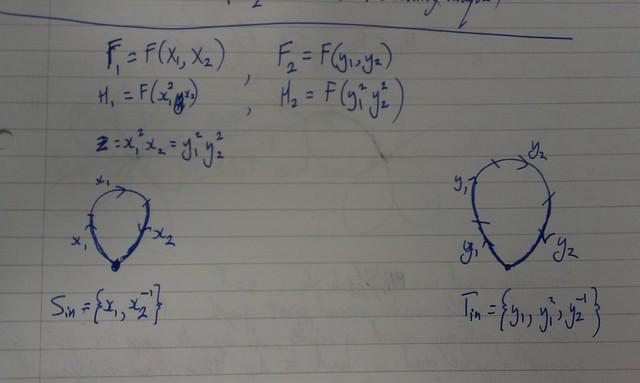Double coset normal form for FPAs
Liza Frenkel is visiting the department, and she wants me to write an algorithm to compute double coset representation normal forms for free products with amalgamation.
Here are some notes I typed up in write maths, see maths as she and Andrew talked. I’m just putting them up here so I don’t lose them.
Suppose:
i.e. we have a finite generating set (in fact a basis)
Consider a group generated by
Choose a set
(we are assuming
every element
can do the same for
Let
A word
Suppose
Let 
For some word
Algorithm:
Read all possible loops round first graph, to get
Keep reading letters round the graph until there is no edge corresponding to the current letter. Call this
Start at the other end, reading loops to get
Then either there are no letters left to look at, and
We want
Example
i)
Membership problem
Can write the
Question: Given
Constructing a folded graph which makes use of the normal form is tricky.